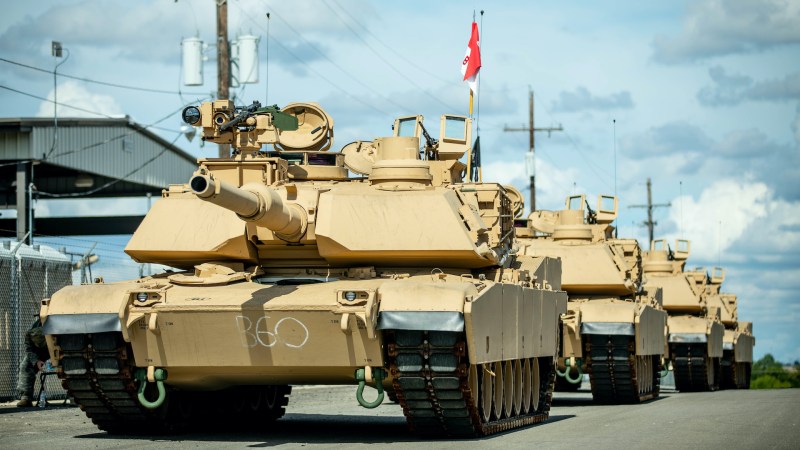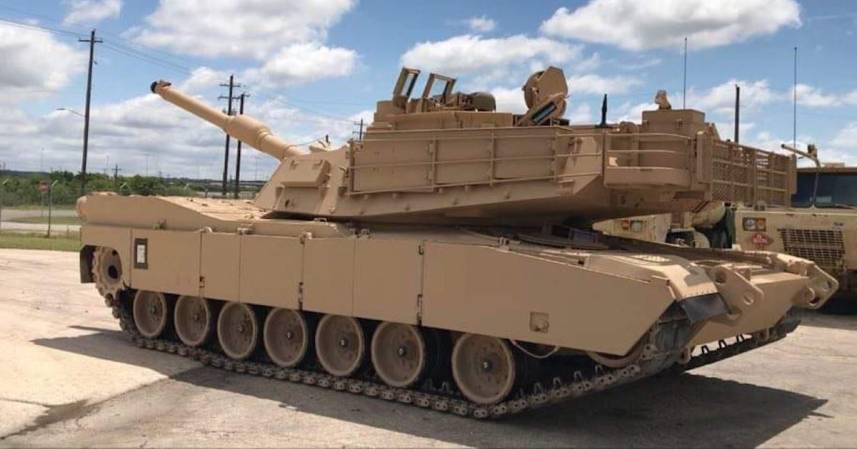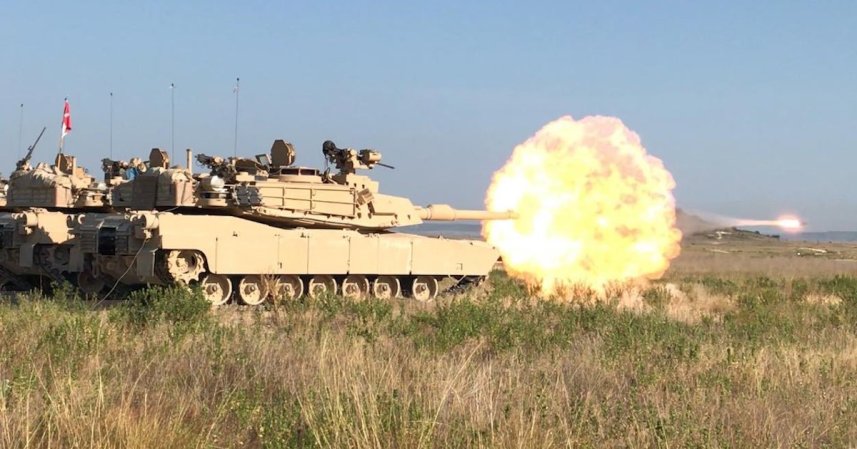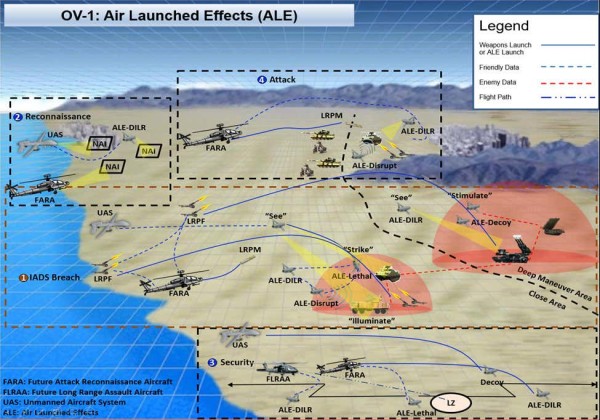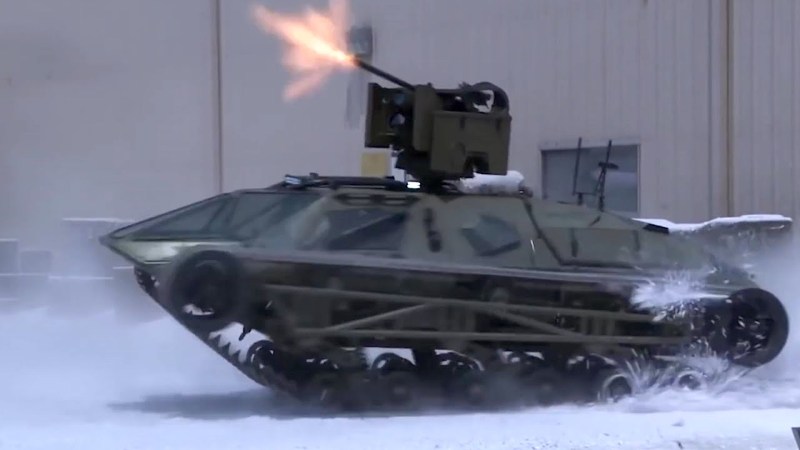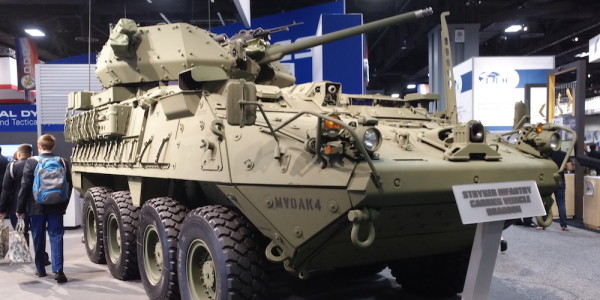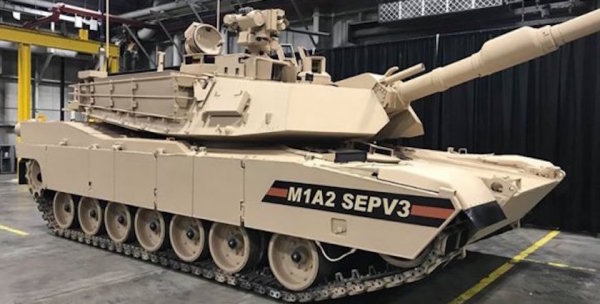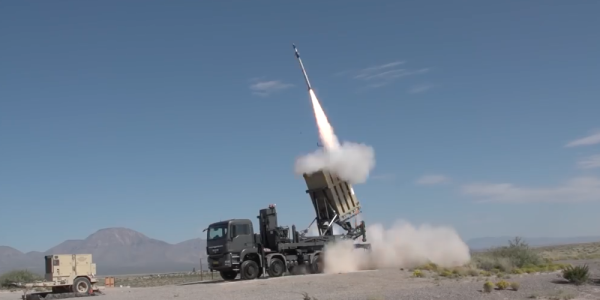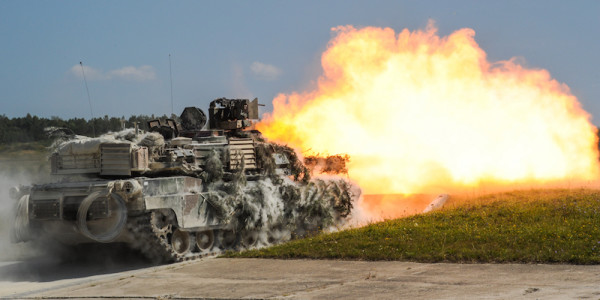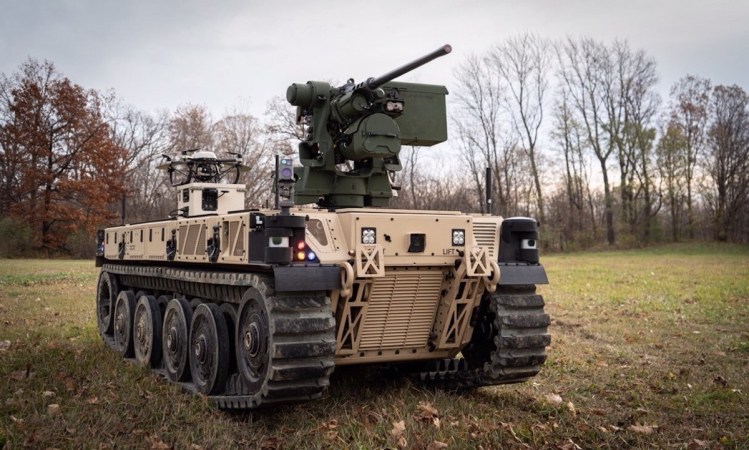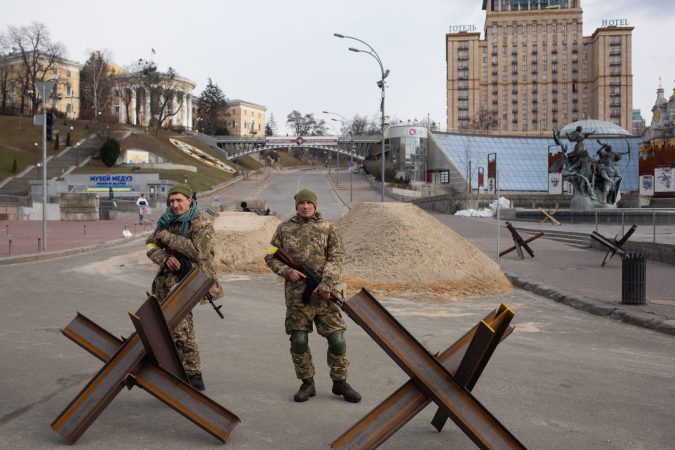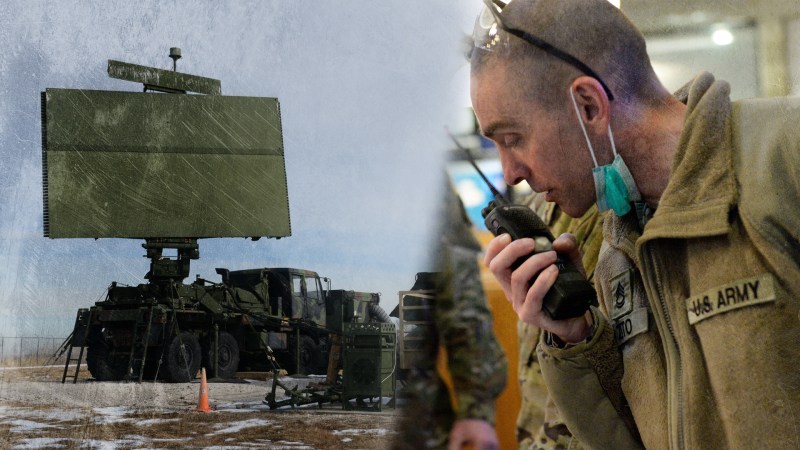U.S. Army personnel have successfully used advanced electronic warfare technology to completely disable enemy armor during a simulated tank assault at the Army National Training Center, Defense Systems reports.
Developed by the Army Rapid Capabilities Office (RCO), the combination of wireless communications-jamming and hacker exploits of vehicle systems forces enemy tanks to “stop, dismount, get out of their protection, reduce their mobility,” as one Army observer described the ANTC training exercise at Fort Irwin, California.
This is only the second major Army test of tactical electronic warfare in recent history. In April, the RCO outfitted nearly 20 soldiers from the 2nd Cavalry Regiment at U.S. Army Garrison Bavaria in Vilseck, Germany, with advanced electronic warfare equipment for field-testing, the first time an Army electronic warfare system had been deployed in a tactical environment.
Barely the size of “a lightweight backpack,” the vehicle- and -infantry portable kits come with two primary capabilities: VROD (Versatile Radio Observation & Direction) to “detect and understand” enemy electromagnetic signals, and the so-called VMAX to “search and attack” with “electronic attack effects” that the Army RCO described as “more effective than the existing jammers used by anti-missile systems in aircraft.”

Soldiers with the 2d Cavalry Regiment train on the VMAX and VROD Dismounted Electronic Support/ Attack system at Grafenwoehr Training Area, Germany, March 13-17, 2017.Photo via DoD
The two tests signal critical milestones in the Department of Defense’s mission to transform “cyber soldiers” from DARPA pipe-dream to tactical tool, a stark contrast to then-Pentagon research and engineering chief Alan Shaffer’s harsh observation in 2014 that the US “ lost the electromagnetic spectrum.”
As Breaking Defense points out, the Army drastically scaled back its electronic warfare branch at the end of the Cold War. And while the Pentagon has put a premium on cybersecurity and operations over the last several years, the separate military domain of battlefield-level electronic warfare, “tactical cyber” — “the art of detecting, disrupting, and deceiving” radio and electromagnetic signals — taking a backseat to warding off Russian and Chinese hackers and securing essential systems and infrastructure.
Since the Army’s official electronic warfare program reportedly won’t field an operational offensive jammer until 2023, then-Army Secretary Eric Fanning and Army Chief of Staff Gen. Mark Milley in 2015 tasked the RCO with a $100 million budget to develop and test various electronic warfare prototypes as quickly as possible within the next five years. And in 2016, the Army began exploring the development of a brand new electronic warfare unit to see battle alongside their fellow rifleman.
“The mission analysis just starts today,” Army cyber chief Brig. Gen. Patricia Frost told reporters in December 2016, emphasizing the rapid development of electronic warfare specialists to start reclaiming the virtual battlefield ceded over the last several decades. “With the analysis that we’re doing over the next three to six months, we’ll rack and stack what are the capabilities that exist today that can allow us to experiment.”
In light of Russia’s territorial aspirations in the Ukraine and Eastern Europe, field-testing the new electronic warfare kits out of Vilseck, nestled between vulnerable NATO allies like Poland, Slovakia, and the Czech Republic. According to RCO director Doug Wiltsie, the latest versions will see operational testing as part of the multinational U.S. European Command exercise Saber Guardian with 20 partner nations in October.
But don’t expect to see the new electronic warfare kits floating around your barracks anytime soon. According to Wiltsie, the Army plans on incorporating soldier feedback and concerns into addition testing from July through Saber Guardian in October before eventually fielding the new EW kits to soldiers downrange by the end of 2017.
“This is not the enduring program,” Wiltse said during the C4ISRNET annual conference in Washington D.C. in May. “We’re looking at electronic warfare for one theater, the requirement that I will meet when we field this stuff by the end of this year will be nowhere near the full capability.”


